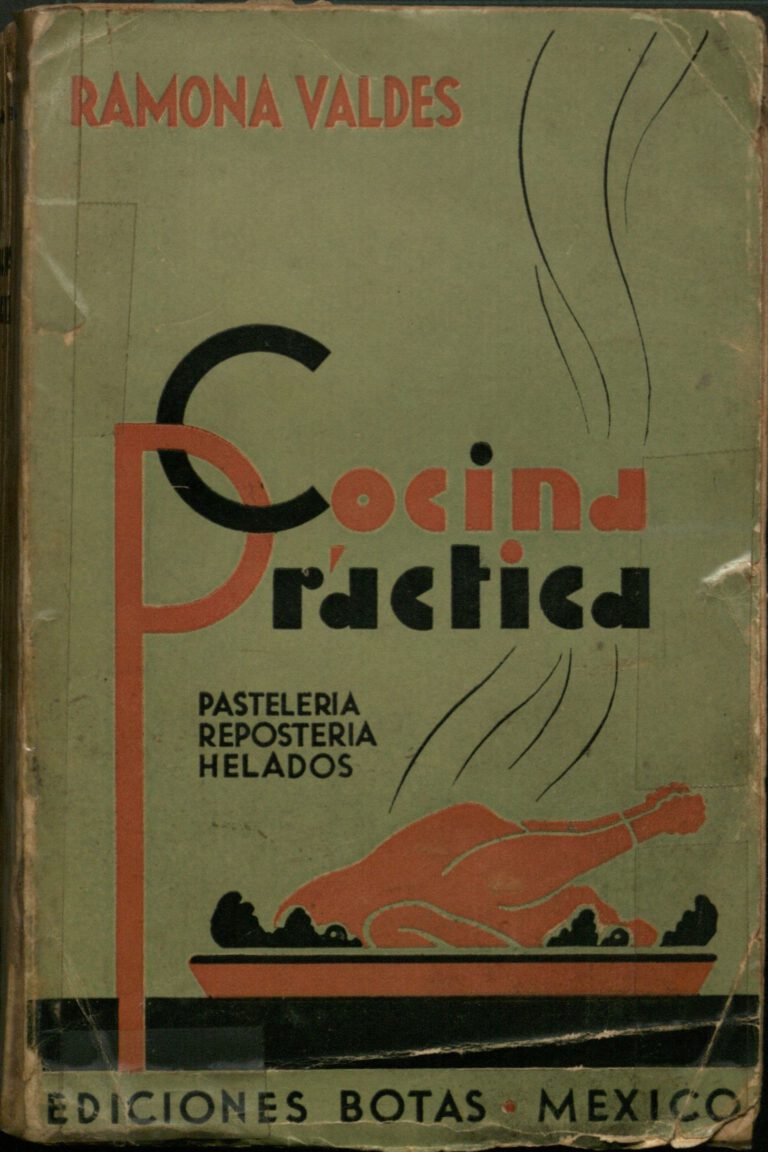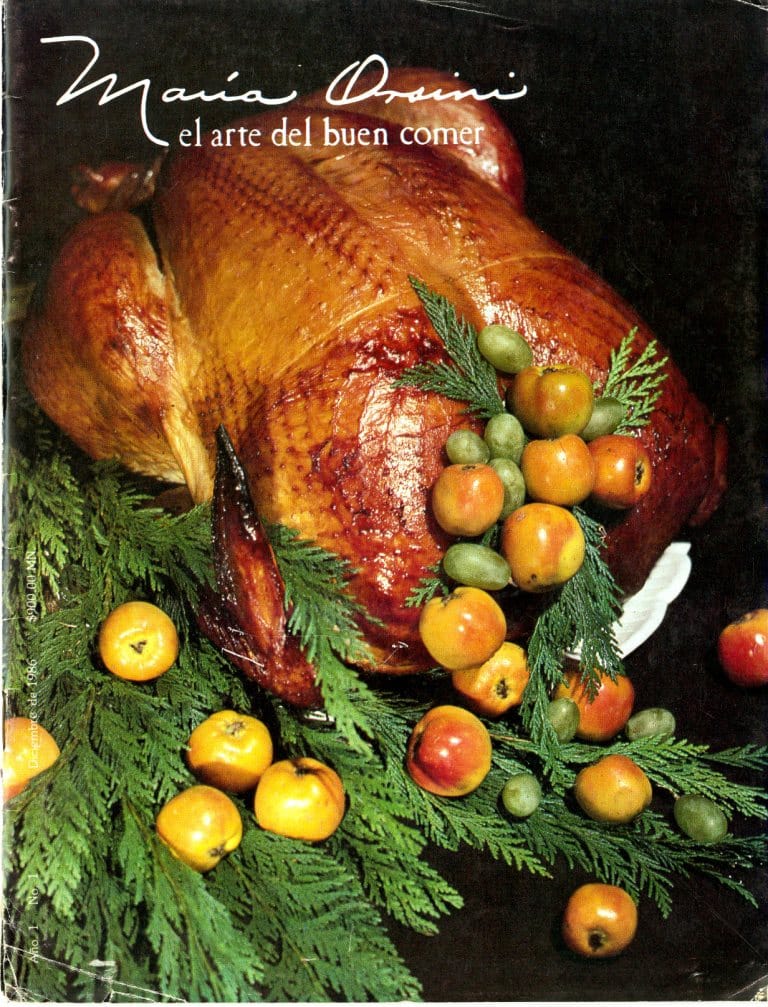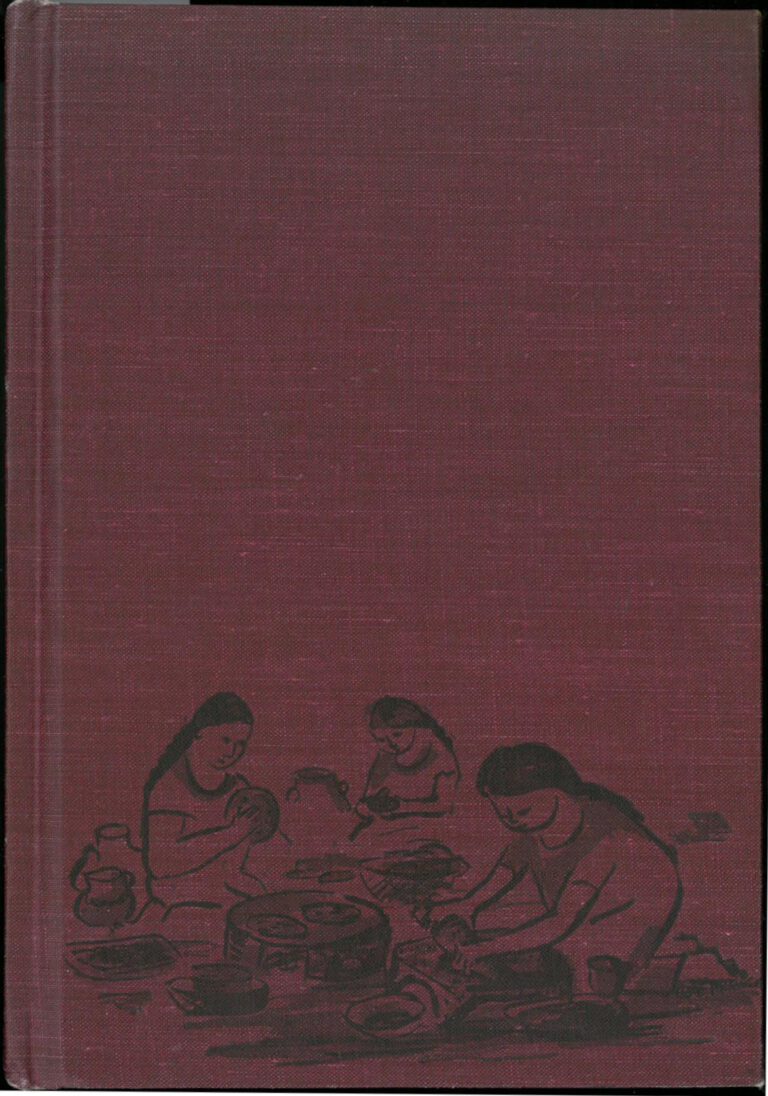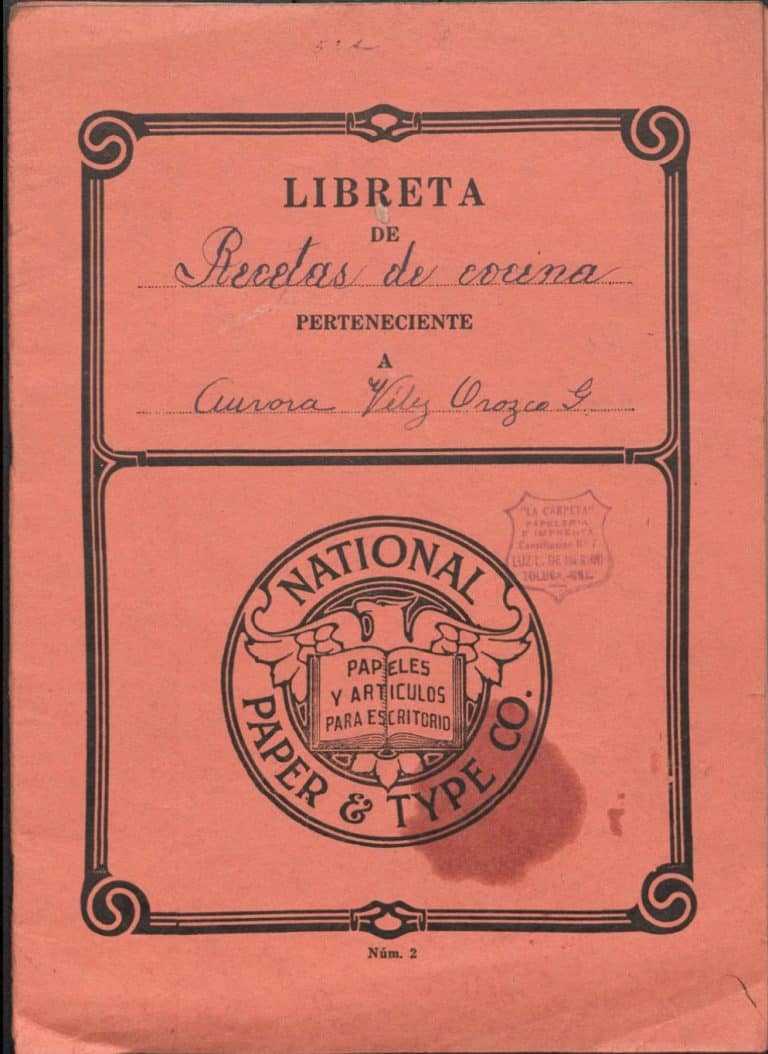Enchiladas San Miguel 1979 (St. Michael Enchiladas)
Zelayarán Ramírez, Bertha and Samano Tajonar, Laura. Los Mejores Antojitos Mexicanos (Mexico: Gomez Editores, 1979): 43 [TX716 .M4 Z44 1979].
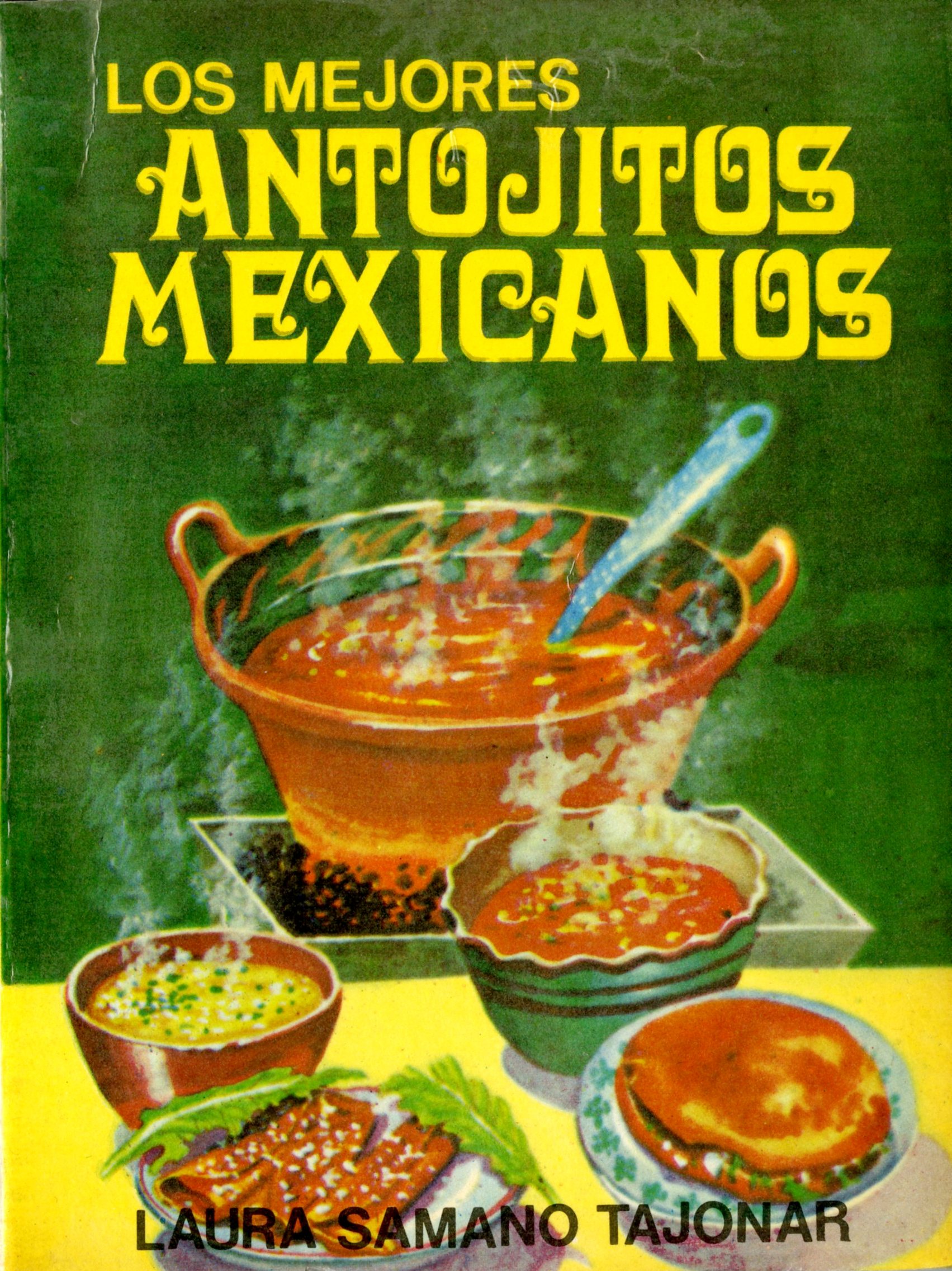
The term antojitos loosely translates to English as “snacks,” but is usually used more specifically to refer to tortilla or corn-masa-based dishes, often eaten as street-food or informal meals.[1] Tajonar’s book illustrates the dramatic change in status such foods experienced over the course of the 20th century. Once relegated almost out-of-sight, or at least to short chapters in the backs of general cookbooks, by the 1970s, it was possible to publish a cookbook devoted entirely to tacos, enchiladas, chilaquiles, and the like. And furthermore to introduce it (as the prologue does) by explaining that “debido a la gran demanda nacional e internacional, se ha propuesta dar a conocer los secretos culinarios de las casas especialistas en este material” (roughly translated: “due to the great demand both nationally and internationally, it has been proposed to present the culinary secrets of the house specialists in this field”).
Located in central Mexico, Guanajuato was known during the colonial period for mining, agriculture, and textiles. In addition to being a center of Miguel Hidago’s rebellion against the Spanish government prior to the War of Independence, the state continued to be a theater of political unrest throughout the 19th century and during into the 20th century. Nonetheless, its agricultural sector has steadily expanded to make Guanajuato a leading producer of vegetables, such as broccoli and cauliflower, to be exported to the United States. Other growth industries include the manufacture of clothing, shoes, and chemicals, as well as metalworking.[2]
Guanajuato shares much of its traditional culinary heritage with its neighbors: San Luis Potosí, Querétaro, Michoacán, and Jalisco. Many of its regional dishes are of Spanish origin, with modifications made to include ingredients indigenous to the region. Examples include barbacoa, empanadas, enchiladas rojas, nopalitos con chile guajillo, and pico de gallo. Guanajuato is also a major producer of strawberries, which are used in a variety of dishes, including atole, tamales, preserves, and simple strawberries and cream.[3]
Enchiladas said to be in the style of San Miguel are usually made with guajillo chiles, but the particular recipe we are preparing tonight makes use of the often more readily available ancho chiles. Tonight’s recipe is also somewhat unusual in that it calls for both red tomatoes and tomatillos. However, the inclusion of carrots and potatoes is traditional, as is the garnish of shredded lettuce and cheese.[4] A vegetarian version of this dish can be easily prepared by substituting garbanzo beans for pork and replacing chicken bouillon with vegetables.
Enchiladas San Miguel
Ingredients
- 32 tortillas delgadas
- Aciete para freir, el necesario.
Para el Adobo
- 7 chiles anchos colorados
- 1 cda. de harina
- 1 cda. de piloncillo
- 10 grs. De consomé en polvo
- ¼ de taza de aceite
- ½ taza de tomates verdes cocidos
- 2 dientes de ajo
- 2 cdas. de cebollas picadas
- 1 cdita. De canela en polvo
- 1 pizca de clavo.
Para el Relleno
- ½ taza de papas picadas
- ¼ de taza de zanahorias picadas
- 1 cda. de consomé en polvo
- 3 cdas. de aceite
- 1 pizca de pimiento molida
- 2 dientes de ajo finamente picados
- 3 cdas. de cebolla picada
- ½ taza de jitomate asado y picado
- 250 grs. de lomo de cerdo molido
- 25 grs. de pasas.
Para Adornar
- 1 lechuga finamente rebanada
- 40 grs. de queso rallado
Procedimiento
- Se desvenan los chiles, se remojan en una taza con agua y se frien en un cuarto de taza de aciete. En esta misma grasa se frie el ajo y la cebolla listados para el adobo.
- En la misma taza en que se remojaron los chiles se licúan la cebolla, el ajo, el tomate verde, la canela, el clavo y el consomé señalado para el adobo.
- En la grasa sobrante se fríe la harina y cuando empieza a dorar se añade la mezcla anterior.
- En 3 cucharadas de aceite se fríen el ajo y la cebolla listados para el relleno y cuando empiecen a dorar, la carne de cerdo, papas, zanahorias, pasas y por ultimo el jitomate, dejando hervir hasta que las zanahorias y las papas estén bien cocidas, agregando una poca de agua si es necesario para lograr el cocimiento, pero dejando que el picadillo quede seco.
- Se sazona con la pimiento y consomé que corresponden al relleno.
- Se fríen una y una las tortillas en el aceite y se sumergen en el adobo, repitiendo la operación.
- Se repartee el relleno poniendo en cada tortilla la parte que corresponda y se enrollan en forma de taco. Se acomodan en un platón refractario.
- Se adornan con la lechuga y el queso rallado.
Nota: Si no se comen enseguida, se calientan al horno tapadas durante unos minutes. En este caso, el adorno se coloca al salir del horno.
Enchiladas San Miguel
Yield: ~15 servings. Preparation time: ~1 hour. Cooking Time: ~40 min
Ingredients
- 32 thin tortillas
- Oil for frying, what’s necessary.
For the Marinade
- 7 red ancho chiles
- 1 Tbsp. flour
- 1 Tbsp. of brown sugar
- 5 tsp. chicken bouillon
- ¼ cup of vegetable oil
- ½ cup of cooked tomatillos
- 2 cloves of garlic
- 2 tbsp. chopped onions
- 1 tsp. ground cinnamon
- 1 pinch of cloves.
For the Filling
- ½ cup chopped potatoes
- ¼ cup chopped carrots
- 1 Tbsp. chicken bouillon
- 3 Tbsp. of oil
- 1 pinch ground pepper
- 2 cloves garlic, minced
- 3 Tbsp. chopped onion
- ½ cup roasted and chopped red tomatoes
- 250 grams of ground pork loin
- 2 tbsp. raisins.
For Garnish
- 1 head of lettuce thinly sliced
- 40 grams grated cheese
Procedure
- Place 2-4 tomatillos in a saucepan, cover with water, bring to a boil and simmer 10 minutes. Set aside.
- Devein the chiles, soak them in 1 cup of hot water and then fry them in a quarter cup of oil. In the same oil fry the garlic and onion for the marinade.
- In the same cup of water that the chiles were soaked in, liquefy the onion, garlic, cooked tomatillos, cinnamon, cloves, and 5 teaspoons of bouillon for the marinade.
- Fry the flour in the oil remaining in the pan from step 1. When it begins to brown add it to the mixture above.
- Fry the garlic and onion for the filling in 3 tablespoons of oil. When they begin to brown, add the pork, potatoes, carrots, raisins and finally the red tomatoes. Allow to simmer until the carrots and potatoes are well cooked. Add a little water while cooking, if necessary, but keep in mind that the end product should be a relatively dry filling.
- Season the filling with pepper and 1 tablespoon chicken bouillon.
- Fry the tortillas one by one in the oil and soak each one in the marinade.
- Divide the filling into 32 equal parts, putting the same amount on each tortilla and then rolling it up in the shape of a taco. Arrange the rolled tortillas in a baking dish.
- Garnish with lettuce and grated cheese.
Note: If not eaten right away, the enchiladas can be covered and heated in the oven for a few minutes. In this case, the garnish should be added after they are removed from the oven.
References
[1] Ricardo Muñoz, Diccionario Enciclopédico de Gastronomía Mexicana (México : Editorial Clío : Fundación Herdez, 2000), 36.
[2] Don M. Coerver, Suzanne B. Pasztor, and Robert Buffington, 2004, Mexico: An Encyclopedia of Contemporary Culture and History. (ABC-CLIO, 2004. eBook Collection (EBSCOhost)), accessed November 6, 2012.
[3] Ricardo Muñoz, Diccionario Enciclopédico de Gastronomía Mexicana (México : Editorial Clío : Fundación Herdez, 2000), 283.
[4] Ricardo Muñoz, Diccionario Enciclopédico de Gastronomía Mexicana (México : Editorial Clío : Fundación Herdez, 2000), 237-238.

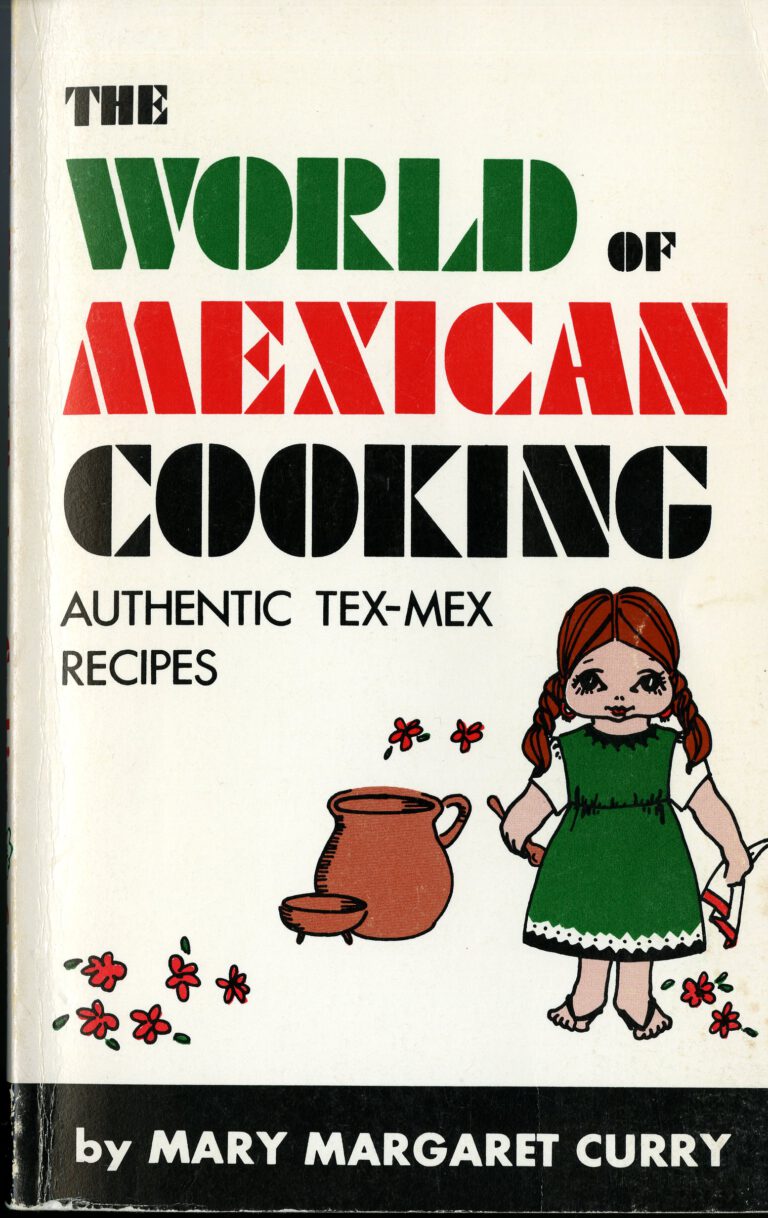
![Consejo Nacional para la Cultura y las Artes (Mexico). La Cocina familiar en el estado de Nuevo León. México : CONACULTA : Océano, 2001 [TX716 .M4 N84 2001].](https://lacocina.utsa.edu/wp-content/uploads/2011/08/mexican_cook_nuevoleon-2.jpg)
